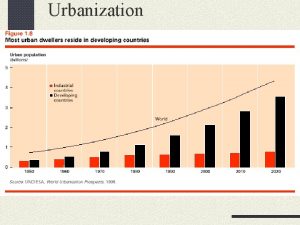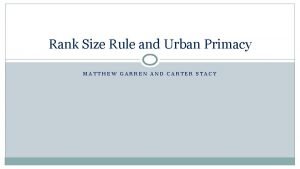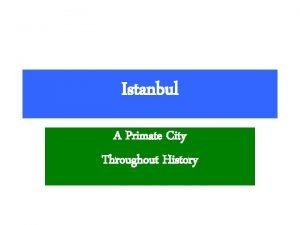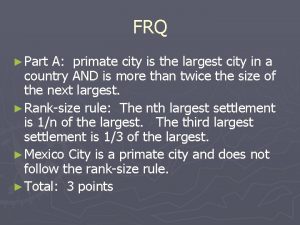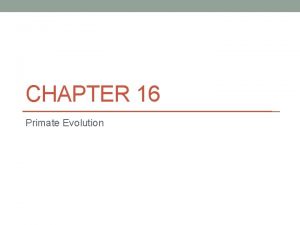THE LAW OF THE PRIMATE CITY AND THE










- Slides: 10

THE LAW OF THE PRIMATE CITY AND THE RANK-SIZE RULE Lecture 5 a

The Law of the Primate City and The Rank-Size Rule • “If all the settlements of a country are ranked according to population size, the sizes of the settlements will be inversely proportional to their rank” • George Zipf 1949 • The primate city is commonly at least twice as large as the next largest city and more than twice as significant. • Mark Jefferson, 1939

The City of Angels FACTOIDS • Capital city of for more than 200 years • One of the world's populated cities • Registered population of over 5. 5 million— estimated 8 million (12. 6% of country population) • Bangkok Metropolitan Region constitutes 14 million people (22% of Country population) • 1, 568 sq. km. area • Recently has seen explosive growth of urbanization • Growth started recently, in the fifties and sixties

Bangkok – Example of a Primate City • Urban Primacy - where the largest city is a many times larger than the second city. • A huge dichotomy exists between Bangkok (8 million) and Thailand's second city, Nakhon Ratchasima (1. 43 million) in 2010

Examples of Countries With Primate Cities • France • UK • Mexico • Thailand

Factors Encouraging Primacy • Favourable initial advantages for site • Advantages maintained and enhanced • Magnetic attraction for businesses, services and people (cumulative effect) • Disproportionate growth increases attractiveness • Has a parasitic effect, sucking wealth, natural and human resources.

For & Against Primate Cities Like Bangkok in an LEDC like Thailand FOR They attract overseas investment and benefits that will eventually benefit the whole country AGAINST They are unstoppable monsters that create serious problems, shortages and escalating land prices that make them less attractive places to live in.

• • • Flooding Refuse Transport Recreation Pollution Poor Planning Finance Poverty Conflicting demands Rapid urbanization Urban Problems in Bangkok

Examples of Countries that Lack Primate Cities • India • U. S. A. • China • Canada • Australia • Brazil • Pakistan

Megalopolises The world’s largest and most continuous areas are in MEDCs. They are known as Megalopolises. Shenzhen (China) was a fishing village in 1982 with a population of 30, 000. In 2012 its estimated population is 15 million. The government hopes that in coming years it will be the largest city on earth, with an estimated population of 40 million people. ELS takes it even up to 150 Million with an area up to 80, 000 Km 2
 Is mexico city a primate city
Is mexico city a primate city Law of primate city
Law of primate city Is paris a primate city
Is paris a primate city Who created rank size rule
Who created rank size rule Rank-size rule example
Rank-size rule example Primate city countries
Primate city countries Positive effects of primate cities on economic development
Positive effects of primate cities on economic development Primate city definition ap human geography
Primate city definition ap human geography Newton's first law and second law and third law
Newton's first law and second law and third law Newton's first law and second law and third law
Newton's first law and second law and third law V=k/p
V=k/p
